Latest Posts

How to Run on Clusters from the COMSOL Desktop® Environment
You can run large simulations remotely on HPC hardware directly from the COMSOL Desktop® graphical environment. Learn how in this tutorial blog post.

Top 4 Reasons to Attend the COMSOL Conference
Thinking of attending the COMSOL Conference this year? There are many reasons why you should, but here, we outline 4 of them in particular…

Advancing Additive Manufacturing with Sequential Simulations
In some ways, additive manufacturing is like sewing or weaving. We talk to a professor of additive manufacturing about how sequential simulations can be used to analyze and optimize the process.

Happy Birthday, Joseph von Fraunhofer
Joseph von Fraunhofer is known for developing the spectroscope and discovering a set of spectral lines that are now known as Fraunhofer lines.
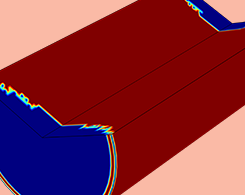
Analyzing Triaxial Testing Methods for Geomechanics
Triaxial testing of soil is important when determining the structural stability of a tunnel, dam, or building. Geomechanics simulation can help ensure that triaxial testing methods are up to par.

Happy Birthday, Frances Spence
Frances Spence worked on the first digital computer, Electronic Numerical Integrator and Computer (ENIAC), during WWII. Learn more about her dedication to computer programming and STEM.

Acoustic Topology Optimization with Thermoviscous Losses
A guest blogger from GN Hearing discusses including thermoviscous losses in the topology optimization of microacoustic devices, such as hearing aids, mobile phones, and metamaterial geometries.
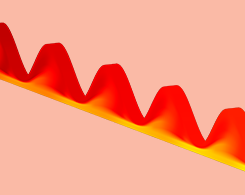
Comparing Static and Dynamic Wall Heat Exchangers with Simulation
We compare the performance and efficiency of static and dynamic compact wall heat exchanger designs using fluid-structure interaction.
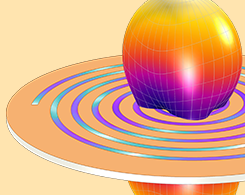
Designing Spiral Slot Antennas with Electromagnetics Simulation
Spiral slot antennas have nearly perfect circularly polarized radiation and wideband frequency response, and they can maintain a consistent radiation pattern and impedance over large bandwidths.

Analyzing Vehicle Suspension with Multibody Dynamics Modeling
How much damage can a pothole do to a car? Automotive engineers can set up lumped mechanical systems in COMSOL Multiphysics® to analyze vehicle suspension technology.

Happy Birthday, Alessandro Volta
Alessandro Volta started out by studying how static electricity generates a physical response in frog legs. The unit of electric potential and electromotive force, the “volt”, is his namesake.
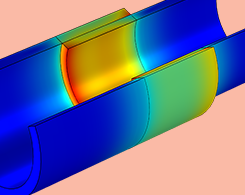
Optimizing the Interference Fit Between 2 Pipes with Structural Analyses
The interference fit between 2 pipes can’t be too tight or too loose. Like the porridge in the “Goldilocks and the Three Bears” story, it has to be just right.

How to Model Roller Bearings in COMSOL Multiphysics®
Roller bearings are one of the most commonly used industrial components, found in gearboxes, conveyors, motors, and rolling mills, among other devices. Learn how to model this part in COMSOL®.
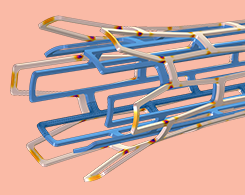
Analyzing the Deformation of a Biomedical Stent with Simulation
By studying deformation in an arterial stent, biomedical engineers can account for unwanted effects like dogboning and foreshortening long before the device is ever implanted.
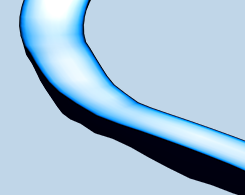
Modeling the Flow of Ice in COMSOL Multiphysics®
The dynamics of glaciers are a complex (and “cool”) subject to study. One method is by using fluid flow simulation to analyze the flow of ice, from accumulation to ablation.
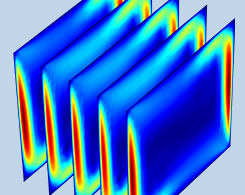
Simulating Natural Convection in Air with COMSOL Multiphysics®
From small electronic components to large buildings, natural convection is a transport phenomena found in engineering disciplines of all sizes. Here’s an example of natural convection in air.

Happy Birthday, Robert Maillart
Balancing structural engineering and artistic capabilities, civil engineer Robert Maillart designed some of the world’s most impressive bridges, including the Salginatobel and Schwandbach.

Optimizing Thermophotovoltaic Designs with Heat Transfer Simulation
Thermophotovoltaic (TPV) systems, known for their flexible fuel choice options, immovable parts, and potential for efficient power generation, can be optimized with heat transfer modeling.
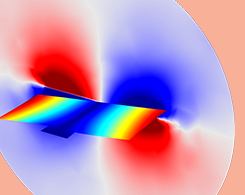
Analyzing the Viscous and Thermal Damping of a MEMS Micromirror
Micromirrors are efficient and inexpensive. Here, we go over 2 types of analyses for a MEMS micromirror design, frequency-domain and transient, using the COMSOL® software.
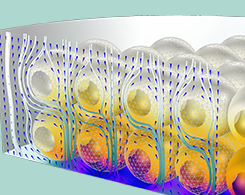
Modeling Adsorption at Surfaces in COMSOL Multiphysics®
What is adsorption? Learn the theory behind this chemical engineering phenomenon as well as how to model the process at surfaces in the COMSOL® software.
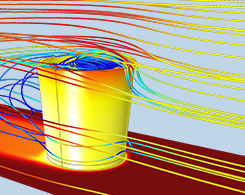
How to Model Moisture Flow in COMSOL Multiphysics®
Learn how to model moisture flow in COMSOL Multiphysics®, which you can apply to industrial examples such as building envelopes and food packaging.
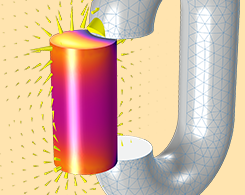
Modeling Ferromagnetic Materials in COMSOL Multiphysics®
Get a comprehensive guide to modeling ferromagnetic materials in COMSOL Multiphysics®, including an introduction to the theory and a series of useful animations.

Applying and Interpreting Saint-Venant’s Principle
Saint-Venant’s principle is found in most structural engineering textbooks, but what is its exact meaning? We go over its history, definition, and relevance to mechanical analyses.

Analyzing a MEMS-Based Strain Gauge Design with Simulation
MEMS-based strain gauges are helpful in both civil engineering and biomedicine. Read about a team of researchers who used the MEMS Module to analyze strain gauge designs.
